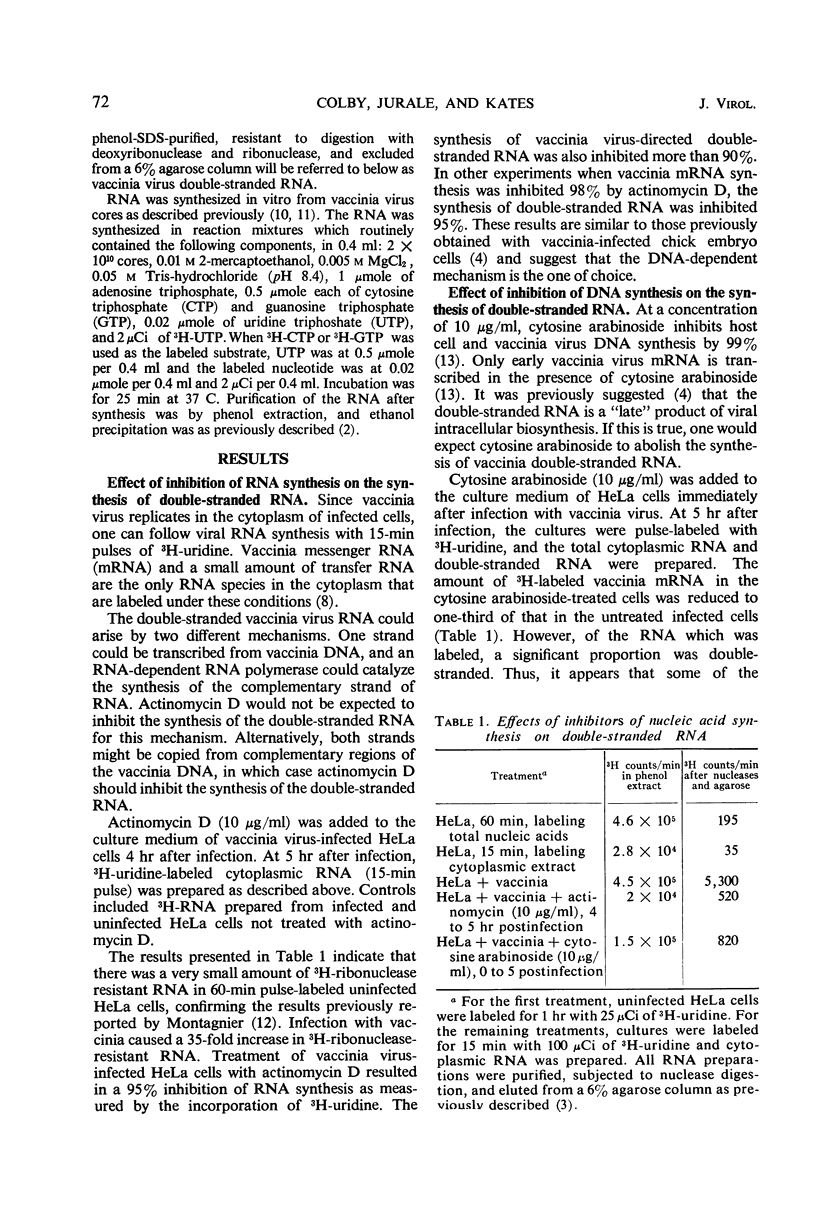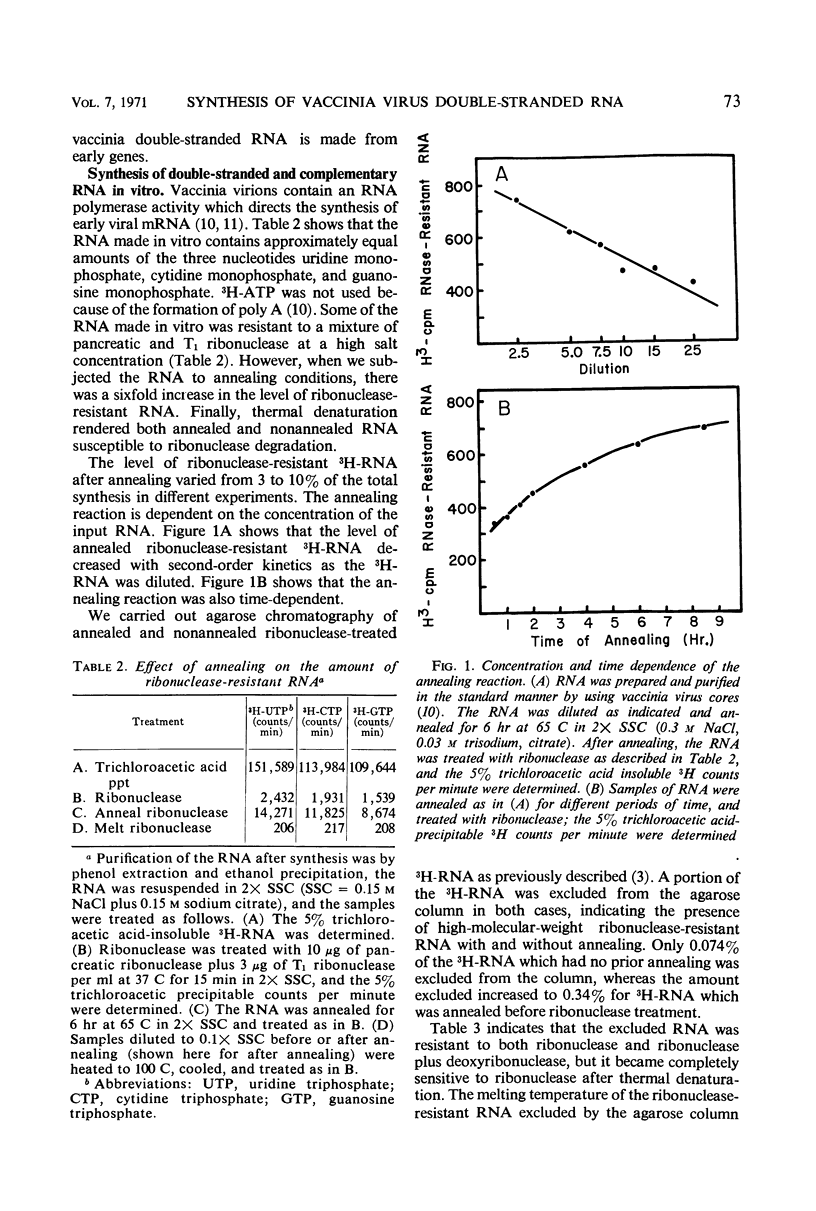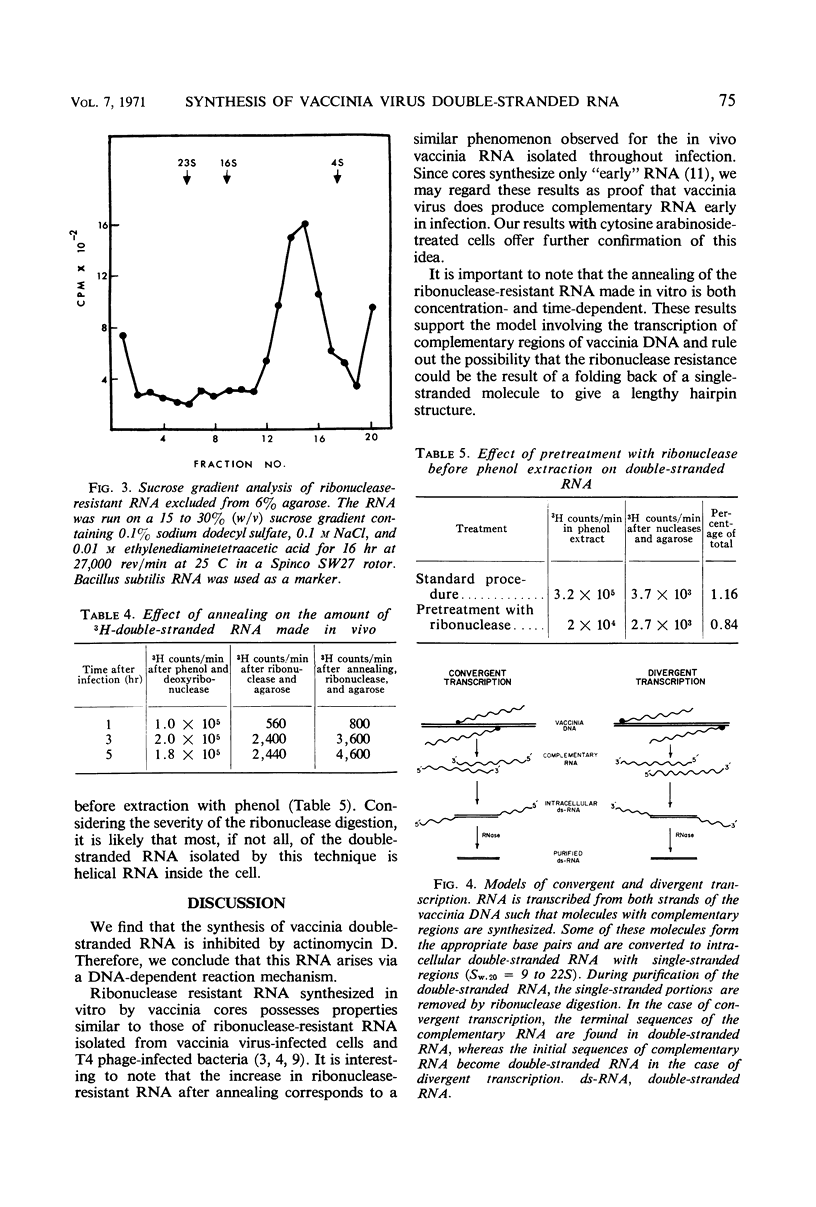Abstract
The synthesis of vaccinia virus double-stranded ribonucleic acid (RNA) in infected HeLa cells was sensitive to actinomycin D, suggesting that a deoxyribonucleic acid dependent reaction is involved. Some double-stranded RNA was made in the presence of cytosine arabinoside in infected cells. Double-stranded and complementary RNA were synthesized in vitro by using vaccinia cores. These two observations indicate that some of the double-stranded RNA is read from “early” genes. The double-stranded RNA synthesized in vitro had the same properties as that made in vivo. At least 70% of the double-stranded RNA made in vivo was in ribonuclease-resistant form prior to sodium dodecyl sulfate-phenol extraction. In addition, there was a complementary RNA in infected cells which could be converted to double-stranded RNA by annealing.
Full text
PDF





Selected References
These references are in PubMed. This may not be the complete list of references from this article.
- Bovre K., Szybalski W. Patterns of convergent and overlapping transcription within the b2 region of coliphage lambda. Virology. 1969 Aug;38(4):614–626. doi: 10.1016/0042-6822(69)90181-0. [DOI] [PubMed] [Google Scholar]
- Colby C., Chamberlin M. J. The specificity of interferon induction in chick embryo cells by helical RNA. Proc Natl Acad Sci U S A. 1969 May;63(1):160–167. doi: 10.1073/pnas.63.1.160. [DOI] [PMC free article] [PubMed] [Google Scholar]
- Colby C., Duesberg P. H. Double-stranded RNA in vaccinia virus infected cells. Nature. 1969 Jun 7;222(5197):940–944. doi: 10.1038/222940a0. [DOI] [PubMed] [Google Scholar]
- Duesberg P. H., Colby C. On the biosynthesis and structure of double-stranded RNA in vaccinia virus-infected cells. Proc Natl Acad Sci U S A. 1969 Sep;64(1):396–403. doi: 10.1073/pnas.64.1.396. [DOI] [PMC free article] [PubMed] [Google Scholar]
- Field A. K., Lampson G. P., Tytell A. A., Nemes M. M., Hilleman M. R. Inducers of interferon and host resistance, IV. Double-stranded replicative form RNA (MS2-Ff-RNA) from E. coli infected with MS2 coliphage. Proc Natl Acad Sci U S A. 1967 Nov;58(5):2102–2108. doi: 10.1073/pnas.58.5.2102. [DOI] [PMC free article] [PubMed] [Google Scholar]
- GLASGOW L. A., HABEL K. The role of interferon in vaccinia virus infection of mouse embryo tissue culture. J Exp Med. 1962 Mar 1;115:503–512. doi: 10.1084/jem.115.3.503. [DOI] [PMC free article] [PubMed] [Google Scholar]
- JOKLIK W. K. The preparation and characteristics of highly purified radioactively labelled poxvirus. Biochim Biophys Acta. 1962 Aug 20;61:290–301. doi: 10.1016/0926-6550(62)90091-9. [DOI] [PubMed] [Google Scholar]
- Jurale C., Kates J. R., Colby C. Isolation of double-stranded RNA from T4 phage infected cells. Nature. 1970 Jun 13;226(5250):1027–1029. doi: 10.1038/2261027a0. [DOI] [PubMed] [Google Scholar]
- Kates J. R., McAuslan B. R. Messenger RNA synthesis by a "coated" viral genome. Proc Natl Acad Sci U S A. 1967 Feb;57(2):314–320. doi: 10.1073/pnas.57.2.314. [DOI] [PMC free article] [PubMed] [Google Scholar]
- Kates J., Beeson J. Ribonucleic acid synthesis in vaccinia virus. I. The mechanism of synthesis and release of RNA in vaccinia cores. J Mol Biol. 1970 May 28;50(1):1–18. doi: 10.1016/0022-2836(70)90100-2. [DOI] [PubMed] [Google Scholar]
- Montagnier L. Présence d'un acide ribonucléique en double chaîne dans des cellules animales. C R Acad Sci Hebd Seances Acad Sci D. 1968 Oct 21;267(17):1417–1420. [PubMed] [Google Scholar]
- Oda K. I., Joklik W. K. Hybridization and sedimentation studies on "early" and "late" vaccinia messenger RNA. J Mol Biol. 1967 Aug 14;27(3):395–419. doi: 10.1016/0022-2836(67)90047-2. [DOI] [PubMed] [Google Scholar]


